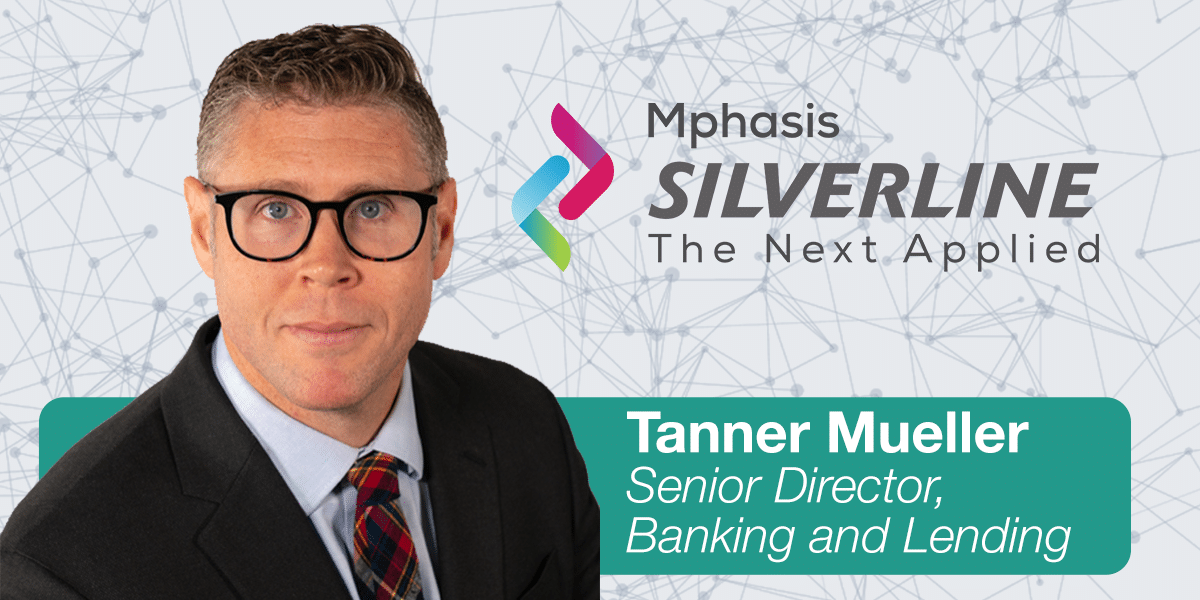Remember when AI was just something we saw in sci-fi movies? Now you can’t go an hour without stumbling across some mention of the latest innovation in AI. From ChatGPT to AI photo editing for social media profiles to Google Bard, the AI space has become saturated with products and services. The AI evolution extends across industries, and financial services is no exception.
Here we look at how AI impacts banking and lending and some AI solutions that can help automate your systems and processes. And before we get going, let us caveat that an actual human from Silverline wrote this blog post with no AI involved (well, maybe we asked Alexa to turn on some writing music!).
Where we’re at with AI
We’ll try to summarize the AI landscape, but whatever we share here could potentially shift in a matter of days. That’s how fast the world of AI is constantly changing.
The most well-known AI is probably OpenAI, the maker of ChatGPT, but other competitors are also entering the field, like Google Bard. Google is also adding a suite of generative AI features for its various Workspace apps, including Google Docs, Gmail, Sheets, and Slides.
Salesforce has introduced two AI products. The ChatGPT app for Slack delivers instant conversation summaries, research tools, and writing assistance directly in Slack. Einstein GPT is the world’s first generative AI CRM technology that delivers AI-created content across every sales, service, marketing, commerce, and IT interaction. Salesforce promises Einstein GPT will be able to make configuration with only the need for admins to simply type what they want (wow!).
But while there are all-new AI products, the concept of AI is nothing new. We’ve had AI for a long time, such as with spell check or using auto-complete. AI is helping us to do more of the things that we already can do, and as it becomes mainstream in people’s lives, it has reached a point where we are more aware of it and can see it in action.
There is a lot of good with the future of AI, but there is a general note of caution regarding quality and output. AI is very complex and has billions of parameters and knowledge spaces that it draws from. AI introduces potential risks that never existed before with how the information it produces is interpreted. While we unpack some use cases, it’s extremely important to understand that we are at the infancy of these ideas with AI. Likely, over the next few years, everything about how we approach technology will change.
AI opportunities in banking and lending
AI in banking and lending is not out to replace jobs. It just changes the tooling used to do those jobs. You’re taking the same steps as you typically would for things like fraud or KYC, but ideally you are automating these steps. The bonus is that you’ll likely get better information by using AI.
These are the top use cases we are seeing for banking and lending to leverage AI:
1. Customer service
A financial services provider’s contact center is the focal point of its customer service. It often has a high turnover and requires a lot of onboarding training. But with customer service automation, chatbot messages can be better tailored to the customer rather than just sending a general knowledge article. You could capture initial questions, answer them within a chatbot, and even escalate by creating a service case automatically.
For customer service, AI is not necessarily replacing your contact center team but is providing them with the frontline tools to share information with your customers more efficiently. Banks and lenders can push out content that creates more of a conversation with customers and improve answers to customer inquiries. Automation can also be used for follow-ups, such as automated email responses.
2. Fraud detection
Consumers used to pay cash or write checks for their purchases, but now transactions are happening in real-time with credit cards or automated bill payments. That means the level of fraud has significantly increased. According to the Federal Trade Commission, U.S. consumers reported 389,737 cases of credit card fraud in 2021, with losses totaling $181 million.
There is no realistic way a bank could manually monitor the millions of real-time transactions happening every second. But by using AI, when a transaction occurs, a great transaction screening / transaction monitoring vendor can quickly identify instances of fraud and cut down on fraudulent transactions. By having safer banking transactions, banks and credit unions are saving money rather than categorizing fraud as a cost of doing business.
3. Compliance
Compliance is essential for new account opening and customer onboarding for Know Your Customer (KYC) or Know Your Business (KYB), as well as decision-making. For example, if a customer is applying for basic funding, such as opening a line of credit or a HELOC, and has a good lending history, you may consider this to be auto-approved using AI for the decision-making. AI will tackle the majority of your middle-of-the-road use cases, allowing your staff to spend less time on obvious decisions and spend more time on more nuanced decisions. AI can also provide access to alternative sources like payroll, where previously you may have only used credit scores.
Silverline’s Deposit Account Opening accelerator, a fully automated end-to-end digital account opening workflow built on Salesforce Financial Services Cloud, is integrated with Alloy. The accelerator validates that the customer or business is who they say they are. It uses automation and AI decisioning from public data sets to check if thresholds are met.
The accelerator can eliminate the need for manual intervention of back-office staff for upwards of 90% of applications. AI helps prevent customer friction from having to wait for a manual review for compliance. It also puts safeguards in place that may be caused by human error or fraudulent activity from digital onboarding and funding.
4. Advanced analytics and insights
One-to-one marketing from banks or credit unions is being done at a higher level with Salesforce Marketing Cloud (leveraging AI). This approach is usually seen with tracking customers across their marketing journey, from seeing an ad to going to your website to receiving customized offers. AI lets you pick up insights along that journey to target your existing and prospective customers better.
Banks are sitting on massive amounts of data from customer history and transactions. This data can be used not only for marketing but also by your advisors. Salesforce’s Einstein Next Best Action functionality uses AI to summarize data insights for selling products and services. It expedites pulling out insights that are previously unrecognizable by manual review.
Your team will better understand your customer base and the products they might be interested in. And having those advanced analytics from AI will ensure you stay ahead of the competition from a marketing and advisor standpoint.
Start leveraging AI with Silverline
Silverline stays on top of the latest happenings with AI and how it can help our clients achieve maximum value with the Salesforce platform. We provide strategy, advisory, technical implementation, and ongoing managed services to enable financial services organizations to automate their systems and processes. Find out how we can help your organization.




